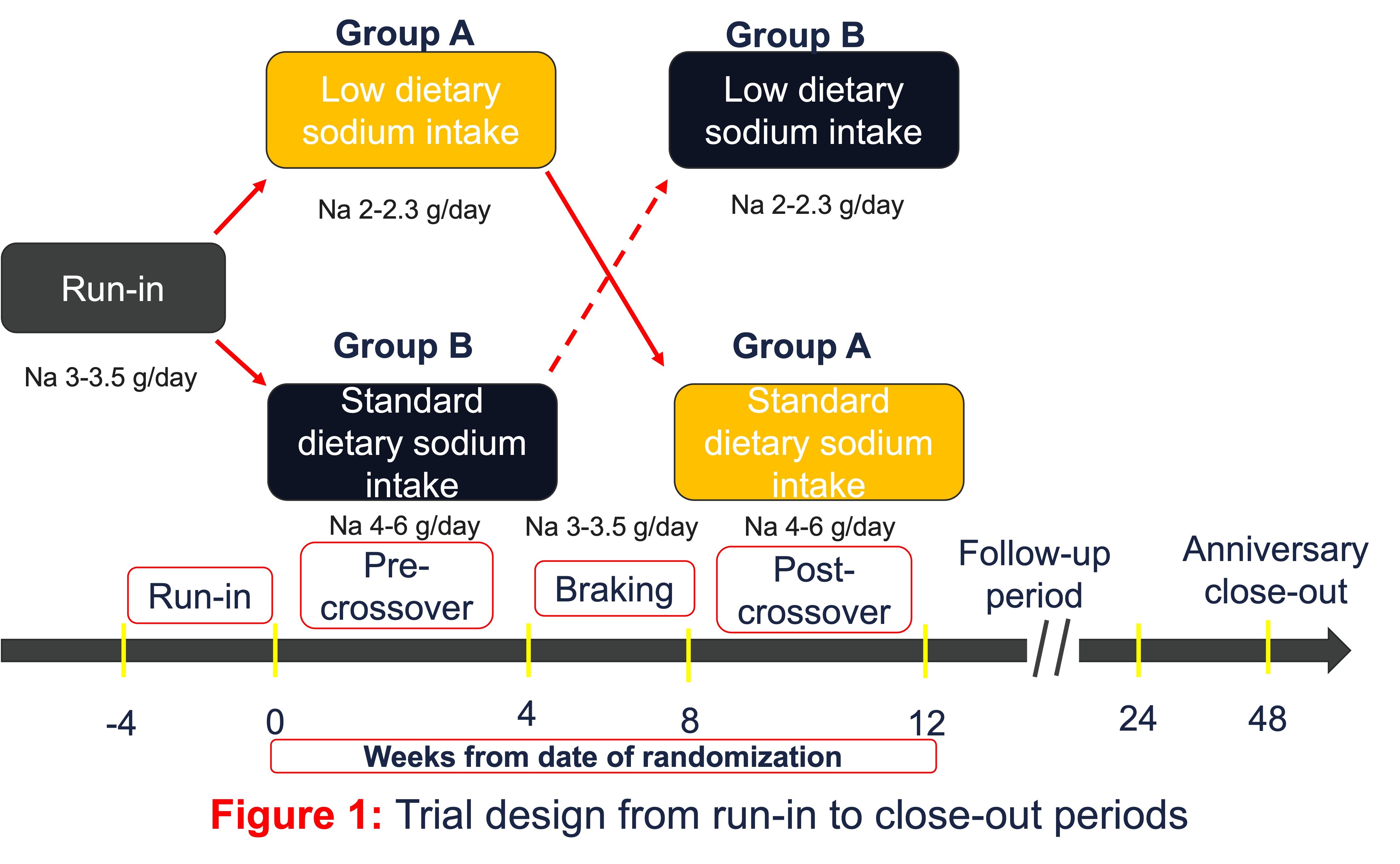Dietary Sodium Intake And Blood Pressure In Living Kidney Donors (SPLID): Rationale And Design Of A Pilot Single-center Crossover Single-blind Randomized Controlled Trial
1Division of Nephrology, Hypertension and Kidney Transplantation, Department of Medicine, University of California Irvine School of Medicine, Orange, CA, 2Division of Kidney and Pancreas Transplantation, Department of Surgery, University of California Irvine School of Medicine, Orange, CA
Meeting: 2022 American Transplant Congress
Abstract number: 9046
Keywords: Hypertension, Kidney, Living donor, Proteinuria
Topic: Basic & Clinical Science » Basic & Clinical Science » 74 - Clinical Trials
Session Information
Session Time: 5:30pm-7:00pm
 Presentation Time: 5:30pm-7:00pm
Presentation Time: 5:30pm-7:00pm
Location: Hynes Halls C & D
*Purpose: Since living kidney donors(LKD) are generally healthy and non-hypertensive individuals, non-pharmacologic interventions are likely to be an acceptable and practical approach to preventing hypertension(HTN). This trial aims to assess the feasibility of the design and impact of low dietary sodium intake(DSI) on blood pressure(BP), kidney function, and albuminuria in LKD.
*Methods: Dietary Sodium Intake and Blood Pressure in Living Kidney Donors (SPLID) is a pilot single-center crossover single-blind randomized controlled trial that aims to evaluate the feasibility of the study design and test the effect of low compared to standard DSI on the change in BP, glomerular filtration rate (GFR), and microalbuminuria in LKD during a 4-month study period. LKD 5 to 12 months post-donation who are not on antihypertensives are invited to participate in this study. After a 1-month run-in period when the participants take medium sodium diet (Na 3-3.5 g/day), they will be randomly assigned to low (2-2.3 g/day) or standard sodium (4-6 g/day) diet for 1 month (pre-crossover). After that, they will undergo a 1-month braking period with medium sodium intake, and then are crossed over to take standard or low sodium diet for 1 month (post-crossover) (Figure 1). Changes in BP, GFR, and microalbuminuria during the 1-month pre- and post-crossover periods are examined using generalized estimating equation.
*Results: Rationale: Compensatory glomerular hyperfiltration post-donation can lead to pathologic renal structural and functional alterations and subsequently neurohormonal changes that contribute to sodium and water retention, ultimately leading to HTN and proteinuria. Low DSI can modulate renal blood flow and reduce glomerular hyperfiltration. This may mitigate the renal pathophysiological changes associated with kidney donation and reduce the risk of HTN, kidney function decline, and proteinuria in LKD.
*Conclusions: The findings of this study will provide the scientific and operational feasibility data needed to design and conduct larger trials in subjects post-donation. This study also provides early proof of concept evidence that dietary sodium intervention can impact BP, kidney function and albuminuria in LKD (NCT05041829).
To cite this abstract in AMA style:
Tantisattamo E, Reddy UG, Ferrey AJ, Ichii H, Dafoe DC, Moradi H, Rhee CM, Kalantar-Zadeh K. Dietary Sodium Intake And Blood Pressure In Living Kidney Donors (SPLID): Rationale And Design Of A Pilot Single-center Crossover Single-blind Randomized Controlled Trial [abstract]. Am J Transplant. 2022; 22 (suppl 3). https://atcmeetingabstracts.com/abstract/dietary-sodium-intake-and-blood-pressure-in-living-kidney-donors-splid-rationale-and-design-of-a-pilot-single-center-crossover-single-blind-randomized-controlled-trial/. Accessed December 29, 2025.« Back to 2022 American Transplant Congress

